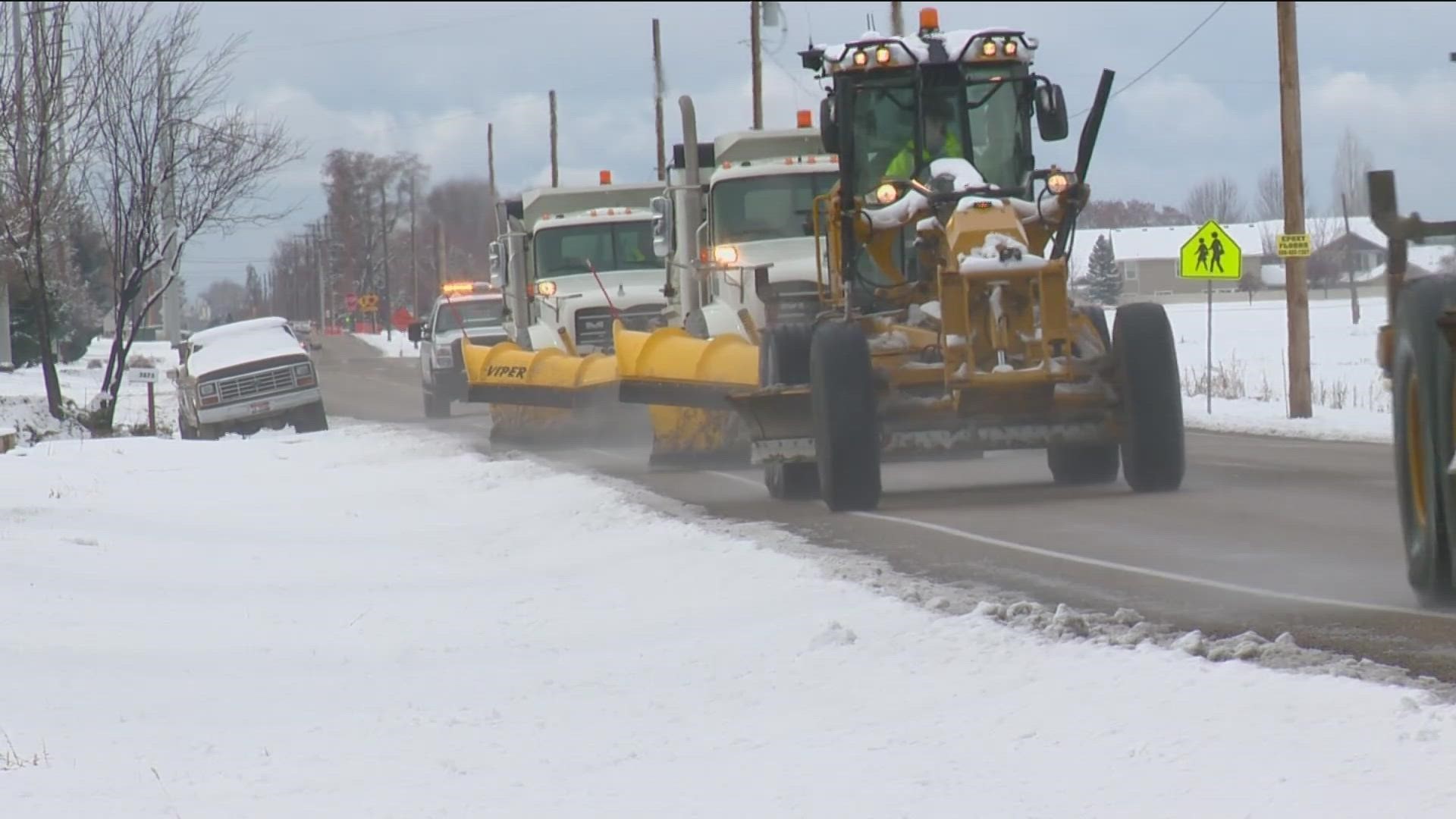BOISE, Idaho — Overnight snowfall coated roads across the Treasure Valley, turning them into a skating rink of sorts during Tuesday's morning commute.
The Ada County Sheriff's Office received 49 crash reports. Officers also responded to nine slide-offs. Canyon County fared better - only one crash was reported.
Warmer temperatures melted most of the snow off the roads by the late morning, but there's still more snow to come this season.
"Leading up to any snow event we're watching the weather," Jennifer Berenger, deputy director of maintenance for the Ada County Highway District said. "We're in close contact with all the different weather models and kind of have an idea of what's coming. It's always an interesting game to watch what's coming, because the wind can do pretty much anything, and the snow and precipitation changes frequently."
Snow started falling Monday during the evening rush, but temperatures were above freezing - so the snow melted onto the ground.
A second wave of snow rolled in around 3 a.m. Tuesday morning.
"We were watching through the evening, we had a little bit of a lull. Then starting at 2 a.m., we brought our full crews out to start working the roads for the next wave of the snow that came in,” Berenger said.
The Idaho Transportation Department (ITD) manages all of the state roads and highways, they were also plowing the pavement when the snow started falling.
"We're staffed 24/7. So, our crews are working through the night regardless of conditions," Ellen Mattila, public information officer for the Idaho Transportation Department said. "You know, if they're not plowing, they're doing maintenance, that kind of stuff. So, they were out all yesterday through the evening, overnight, and into the morning. That's standard operating procedure for us from November through the end of March, early April, as the snow lets up."
ITD crews reported roads were clear of snow by around 10:30 Tuesday morning.
ACHD has 150 operators and 44 plows to cover more than 5300 lane miles of roads throughout the county. With snow coming down right when the morning commute was starting, it was difficult to cover all that pavement.
"We want to use the right materials at the right time. We don't want to waste materials, knowing that they're just going to run off and not help anything," Berenger said. "In some areas of the county, we were definitely getting the material down that needed to be down ahead of time. But with this storm that happened just right as the morning commute was starting, you can't be everywhere at once. So, trying to get out, making the best impact we can in that short amount of time before the commuters start. Unfortunately, Mother Nature was just kind of ahead of us on that, we just couldn't get the crews to all places at once."
ACHD's vehicles use an arsenal of different treatments for different areas of the road.
"We've got magnesium chloride, which is a liquid de-icer, anti-icer. We've got rock salt, which helps break the ice apart once it's there. And we've got sand which helps with the traction, and it helps to kind of break up the material once it's there," Berenger said.
There are many variables that ACHD takes into account when deciding whether or not to send crews out. Air and road temperatures, precipitation, and winds can all factor into their strategy.
"We have 5300 lane miles, and a lot of different roads throughout the county to manage" Berenger said. "In areas down south, we were seeing high winds coming. It's very challenging to pretreat the roads with a magnesium chloride, knowing that the wind is coming, because the wind will send the snow across the magnesium chloride and make it stick. It almost works counter intuitive to what you think would happen. You have to take all of those variables into account, whether or not you'll send vehicles. Even when we do send the vehicles, they're using different treatments for different areas."
If you encounter roads that don't look like they've been treated, ACHD says to driver slower, and make sure your tires are good.
"Take that extra time to clean off your car as you're driving. It helps with your visibility, it helps with the other visibility of the motorists so you're not creating a wind pattern behind you," Berenger said. "Also, don't pass plows if you can help it. Definitely don't pass them on the right. Their plow extends a little bit further out, and you might not be able to see the plow."
Watch more Local News:
See the latest news from around the Treasure Valley and the Gem State in our YouTube playlist:

